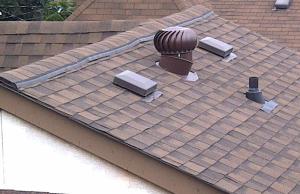Styles and Types of Vents in Commercial Roofing Dallas
Proper ventilation extends the lifespan of roofs while saving you money from unnecessary repairs and energy bills. Ventilation in commercial roofing Dallas eliminates moisture, the resulting damage of which is the number one cause of roof replacement. It also cools your house in hot climates that results in net savings on your monthly electric bills.
Proper air circulation is accomplished through the use of roof ventilation. The primary purpose of roof vent is removing moisture and hot air in the attic and areas under the roof by allowing them to escape outside.
Different types and styles of roof vents are available, each of which accomplishes its purpose differently. Some require electric power to function, others use solar energy and wind power, while some work without requiring any power source.
Box Vents. These are made of either metal or hard plastic and referred to as static vents because they have no moving parts. They are installed over cuts made on the roof, preferably on the highest possible area near the ridge to maximize ventilation of hot air and moisture, which rise up and escape through the box vents. Homeowners can select from among different colors to match their roofs.
Off Ridge Vents. These are just variation of the box vents and function similarly. Instead of a box design, this vent style are rectangular in shape.
Ridge Vents. This type of roof vent has no moving parts and does not require electricity to operate. Ridge vents should be installed along the entire length under the roof’s horizontal ridge. An unfinished and relatively unsightly look is created when ridge vents do not run the entire ridge length. Combined with soffit vents, ridge vents are considered the most efficient ventilation system because they create an even distribution of temperature.
Power Vents. These have motors built into them that turn large fans inside the device. Some models come with adjustable thermostats – which turns on the fan when a certain temperature is reached – and humidstat – which detects the level of humidity for automatic trigger. The power vents, being equipped with motors, require electricity to work. Some models, however, are powered by solar energy therefore eliminating the need for electricity.
Wind Turbines. Unlike the static box vent, wind turbine has moving parts when operating but has no motors and uses wind power to move the turbine around. The spinning action of the turbine draws heat and moisture up towards it and out of the roof. Because of the spinning movement, wind turbine is more effective than a box vent in removing hot air and moisture.
Cupola Vents. These are decorative vents found on top of a high ridge and allow hot air and moisture to escape through their openings. Although they function as roof vents, their capability is limited.
